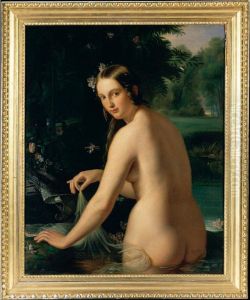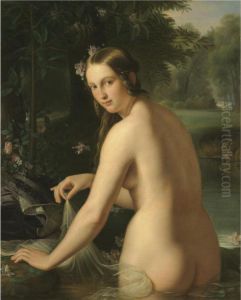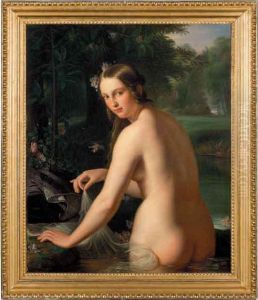Giuseppe Bonolis Paintings
Giuseppe Bonolis was an Italian painter, born in 1886 in Italy, whose work predominantly spanned the first half of the 20th century, concluding with his death in 1954. Bonolis was part of a generation of artists who grappled with the rapid changes of the early 20th century, both in terms of artistic innovation and the sociopolitical upheavals of his time. His contributions, however, are often overshadowed by his more famous contemporaries, leaving him as a somewhat lesser-known figure within the broader landscape of Italian art.
Bonolis's early life was marked by a traditional artistic education, which was typical for the time, involving rigorous training in drawing, painting, and the study of the masters of the Italian Renaissance. Despite this conventional start, his style evolved significantly over his career, reflecting the influence of various movements such as Futurism, which swept through Italy in the early 20th century, and later, elements of Realism. His work, therefore, straddles a line between the celebration of modernity and a nostalgia for Italy's classical past, a tension that was a hallmark of Italian art during this period.
Throughout his career, Giuseppe Bonolis participated in several notable exhibitions, both nationally within Italy and abroad, contributing to his reputation at the time. His works were often characterized by their vibrant colors, dynamic compositions, and a certain emotional intensity that suggested a deep engagement with his subjects, whether they were landscapes, portraits, or scenes of daily life. Despite this, he never became a leading figure in the art world, and his legacy has been somewhat eclipsed by the major artists of his era.
After his death in 1954, Bonolis's contributions to Italian art began to be reassessed, particularly within the context of regional art movements and the exploration of less recognized artists who contributed to the richness of early 20th-century Italian art. Today, his works can be found in various Italian art museums and galleries dedicated to the period, where they continue to be appreciated for their unique blend of tradition and modernity, as well as their emotional depth and technical skill. Bonolis remains an interesting figure for art historians who seek to understand the complexities of Italian art during a time of tremendous change.



